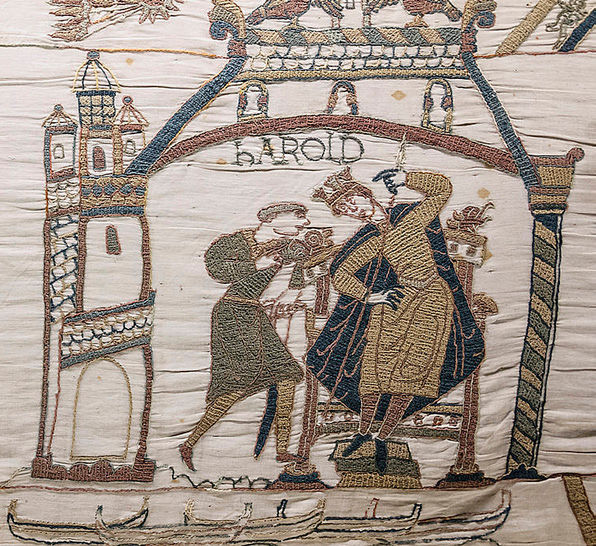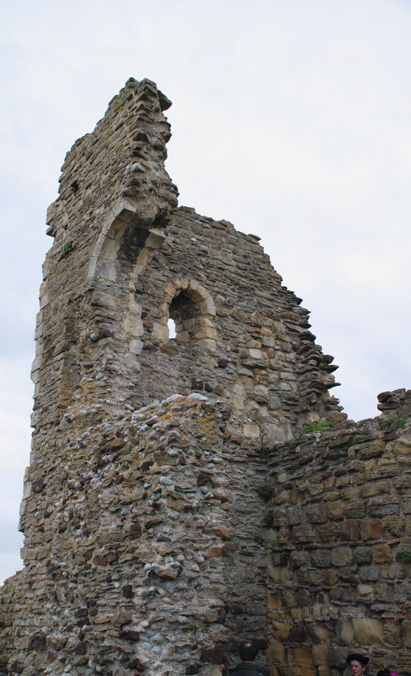This text comes from our book, Light to the Nations, Part I.
Early in 1066, the childless old Saxon king of England, Edward the Confessor, died without settling the question of who should inherit his throne. Two men claimed the crown of England. One was Edward’s nephew, Harold. The other was William, the duke of Normandy in northern France.

Fearing Duke William, the Saxon nobles of England elected the Saxon prince Harold as king. Refusing to give up his claim to the English throne, William set out with all his forces, sailed across the channel separating England from France, and landed near the town of Hastings. The new Saxon king, Harold, and his major nobles and warriors were in the north near York, putting down a rebellion and repelling an invading force of Danes. After defeating the invaders and putting down the rebellion, Harold and his men turned south to meet William. Fifteen days later, they reached the channel coast and Hastings.

After arriving too late in the day on October 13, 1066, to begin battle with the Normans, the Saxons drew up the shield-wall and waited until morning. The next day Harold’s men, exhausted by their battles in the North and the forced march to Hastings, fought off several attacks by William’s archers and repeated charges of the Norman armored horsemen. But in the end Harold’s men were worn down by the Normans’ persistence. In late afternoon, Harold’s brothers were both killed. The royal guard surrounded the king and tried to protect him from his enemies, but King Harold was struck down as night fell over the field. Many of the nobility of Saxon England died along with their king at Hastings. The English surrendered at last, on October 14, 1066.
William moved quickly against all possible resistance in England and to prevent the English council from electing another king. William had himself crowned king of England in Westminster Abbey in London on Christmas Day, 1066.
Comments